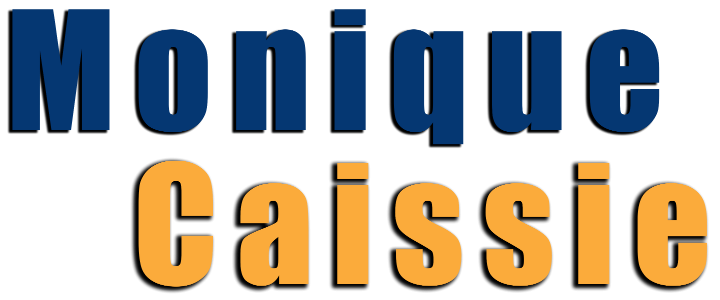
Anger or anxiety disables our thinking brain. We need to re-calibrate what we are thinking in order to reclaim our emotional balance. That being said, when someone is putting pressure on us or elevating our blood pressure, stepping back and approaching things differently can help improve the outcome.
Think of something that is keeping you up at night and the main person responsible for this level of frustration. I’m not talking about a government official or someone we cannot influence, but rather someone with whom we have a relationship. An employee, a colleague, a boss, a relative; you know the drill.
Next, look at the situation which is causing you grief and do these steps:
#1 Take stock
On a scale of 1 to 10, figure out how committed you are to fixing this and taking action. So a rating of 1 is “I would be happy if I never had to deal with this person again” and 10 is “I truly value this relationship and want to solve this problem”. If the consequences of leaving this person is motivating us to stay, we still need to figure out our commitment level. The higher the number, the higher the commitment.
If the commitment number you end up with is under 7, then you need to ask yourself, on a scale of 1 to 10, how committed are you to stay in this relationship. We are either more committed to fixing the problem or we are more committed to disengaging. Now be honest with yourself!
It is important to make sure your true commitment level is high enough. Otherwise all your decisions will be laced with resentment or a desire to “show them” and your actions will poison the well. If you cannot authentically adopt a conciliatory stance it may be a more mature to plan an exit strategy than to make a half hearted effort to fix this.
Once you’ve decided you do want to stay in this situation, its time to:
#2 Flip it on its head
This is where you take stock of the other person’s perceptions and needs in this situation. You should be able to reflect back to them that you truly see and recognize how they are experiencing this. Even if their needs are not your needs (for example you don’t need outside approval to feel good about yourself) make the decision that their experience is valid and that you will respect this about them.
When relationships have broken down, we need to reopen the dialogue. When you are curious and respectful around what they are experiencing, this is how trust gets rebuilt. Trust to relationships is like yeast to baking bread. So find out their perception and validate their needs.
Once you have started a conversation, if they need more than a dialogue and validation:
#3 Create your longer action plan
What action are you willing to take to elevate their feeling of trust in you? Let say it’s more than one thing that needs to be broken down into smaller steps. Start with the final result you are looking for then work backwards. With a paper and pen, think of the previous action to each result until you come to the first action needed to start that new direction.
You now have a longer term action plan and you know that each action should be able to be done in a short period of time. Preferably within 3 or 4 days.
Do you feel like you are guessing at the actions? Many of us don’t want to make an effort without guarantees. But that’s not real life. Just break down the actions into smaller steps and open your mind to the possibilities.
If you’re hesitating because you want more guarantees, go back to number 1 and review your commitment level to solving this. Otherwise, your low trust and commitment might poison the well. You want to avoid sabotaging this out of spite.
If this is very uncomfortable so you’ve been putting it off, it can be helpful to get an accountability person or a sounding board while you figure these steps out. Whether it’s a friend colleague or a professional coach you hire, this can dramatically shorten the time to take action improve your outcomes.
What gets in the way?
#4 How to stop ruminating
When we are anxious or angry, our dinosaur brain, the fight-flight-freeze portion of our brain, is in full swing. That disables our ability to use the executive function of our brain and we cannot problem solve or plan very well. We need to calm that section down.
If you haven’t checked out mindfulness or meditation, I strongly urge you to do so.
Mindfulness is a practice where we focus on the here and now in our bodies. We simply need to become very aware of something outside of those negative emotions. Being aware of a part of our body or our breathing takes seconds and can flip a switch.
Imagine suddenly focusing on your big toe right now while taking deep breaths. What do you notice about your toe? Is it hot, or cold or tingly? Really become acquainted with your big toe. Is it comfy or maybe your shoes are too tight?
 The biggest problems with anxiety is how we ruminate on the problem making it the whole focus. The brain cannot think about two things at the same time so simply focusing on your big toe takes you away from ruminating. After doing that for a minute, it gives your executive function an opportunity to reboot.
The biggest problems with anxiety is how we ruminate on the problem making it the whole focus. The brain cannot think about two things at the same time so simply focusing on your big toe takes you away from ruminating. After doing that for a minute, it gives your executive function an opportunity to reboot.
When I was a full time counselor, a really popular thing I taught my clients was my my potato sack meditation. Check out the video I did on it. Just click on the potato picture or click here.
[Tweet “Successful relationships don’t happen in a vacuum.”]
Here are those 4 steps again for when you are faced with a difficult person:
- Take stock of your commitment to resolve this
- Flip this problem on its head by understanding their position
- Create an action plan
- Quiet your dinosaur brain
I would love to hear from you. What do you think the biggest obstacle is when we are faced with a difficult person? What do you do that works to improve the relationship?
If you’re ready to make changes around the people who drive you crazy, maybe it’s time for a conversation to see how I can help you too.
BIO
 Monique works with organizations who want to reduce conflict to create a culture of collaboration, engagement and productivity. The most successful leaders are not infallible when faced with someone who “drives them crazy!” Her strategies to empower people to better understand each other and have better outcomes, while having fun, are appreciated by all who meet her. She draws from 30 years of crisis intervention and mental health work, she is a Level II Accredited Trainer for DISC as a Human Behavior Consultant and a Certified NLP Professional Coach. She loves meeting people and getting to know them and their industry. So feel free to reach out.
Monique works with organizations who want to reduce conflict to create a culture of collaboration, engagement and productivity. The most successful leaders are not infallible when faced with someone who “drives them crazy!” Her strategies to empower people to better understand each other and have better outcomes, while having fun, are appreciated by all who meet her. She draws from 30 years of crisis intervention and mental health work, she is a Level II Accredited Trainer for DISC as a Human Behavior Consultant and a Certified NLP Professional Coach. She loves meeting people and getting to know them and their industry. So feel free to reach out.

